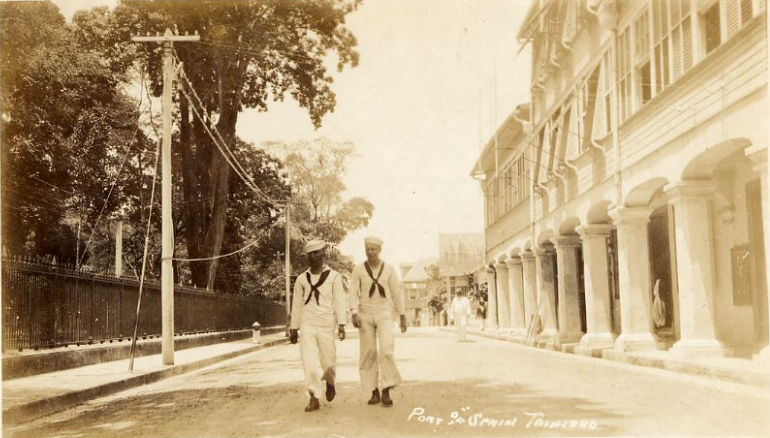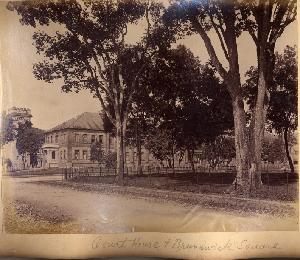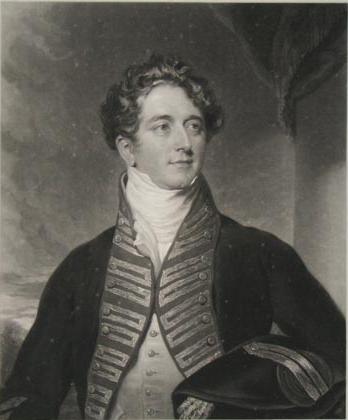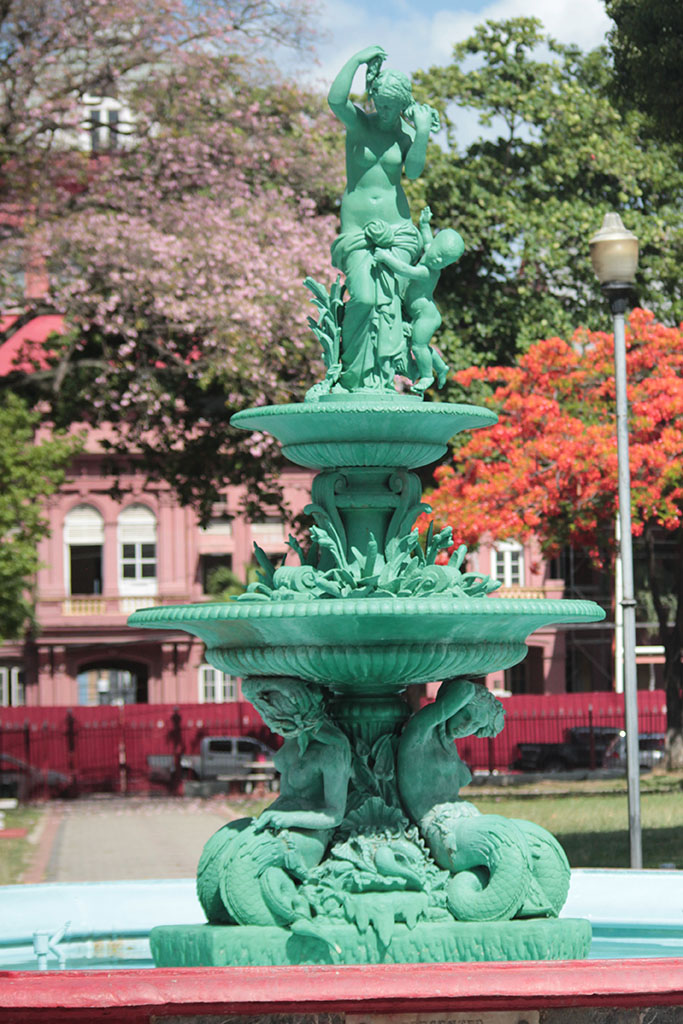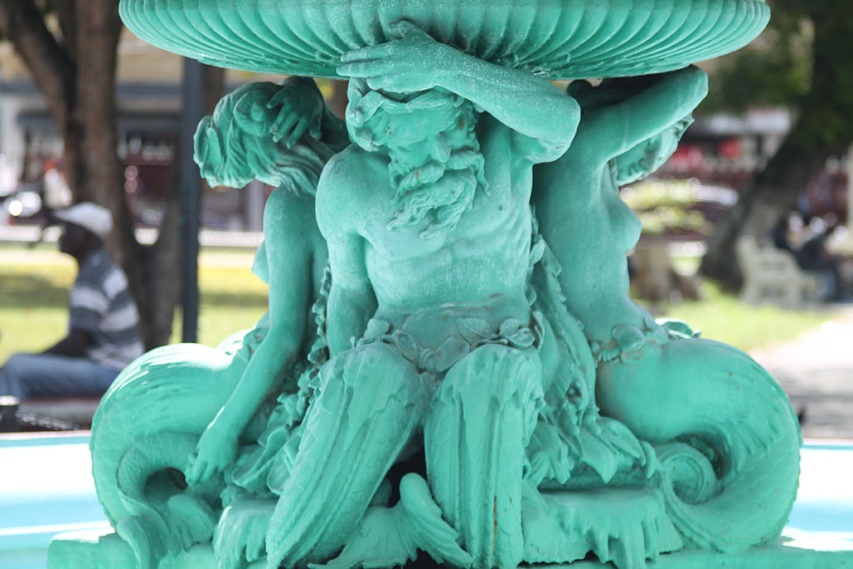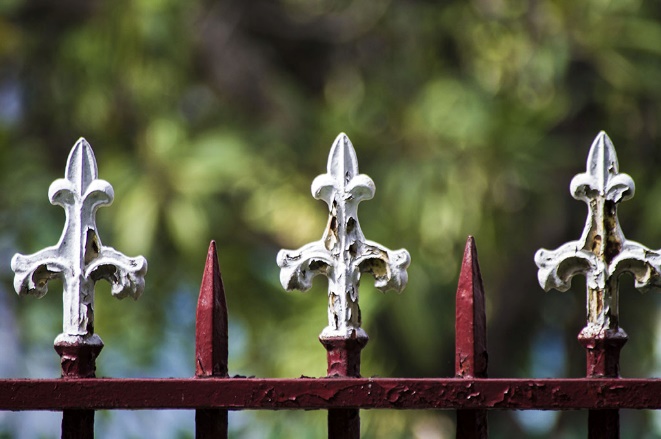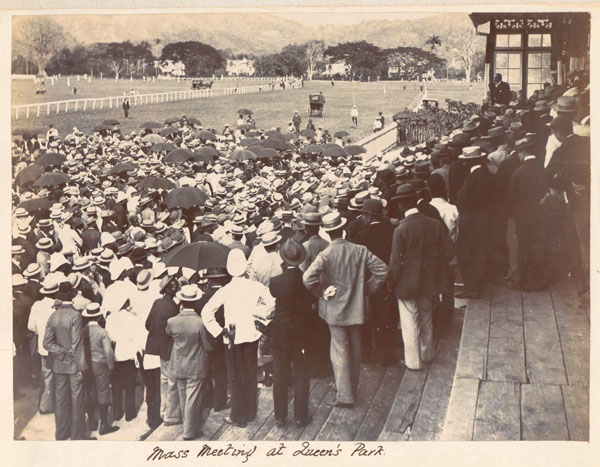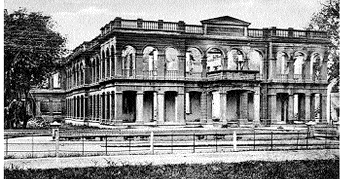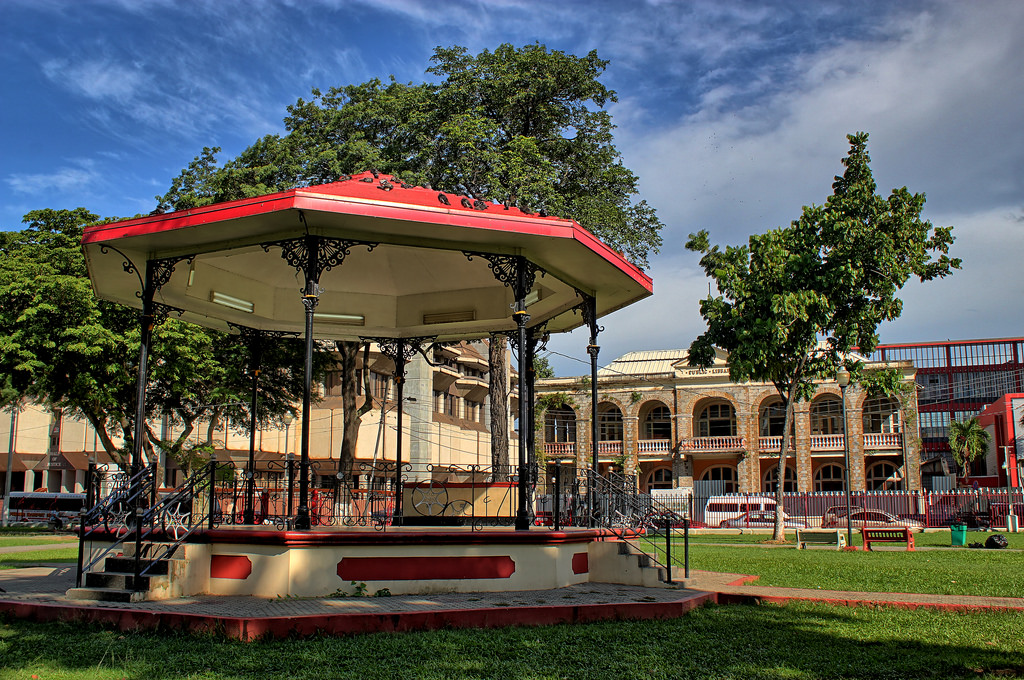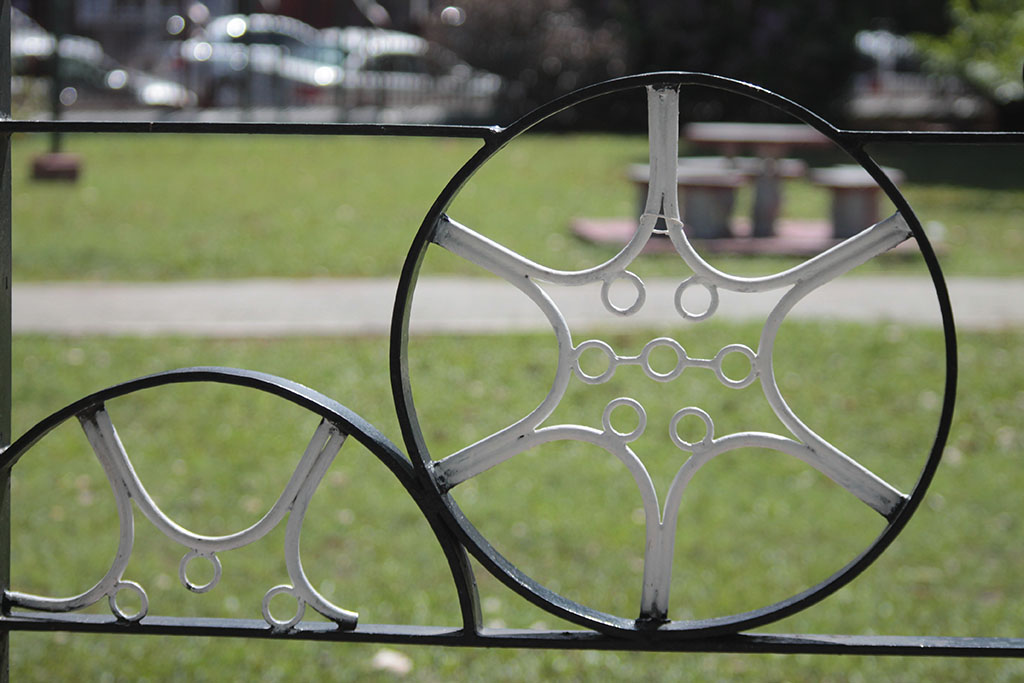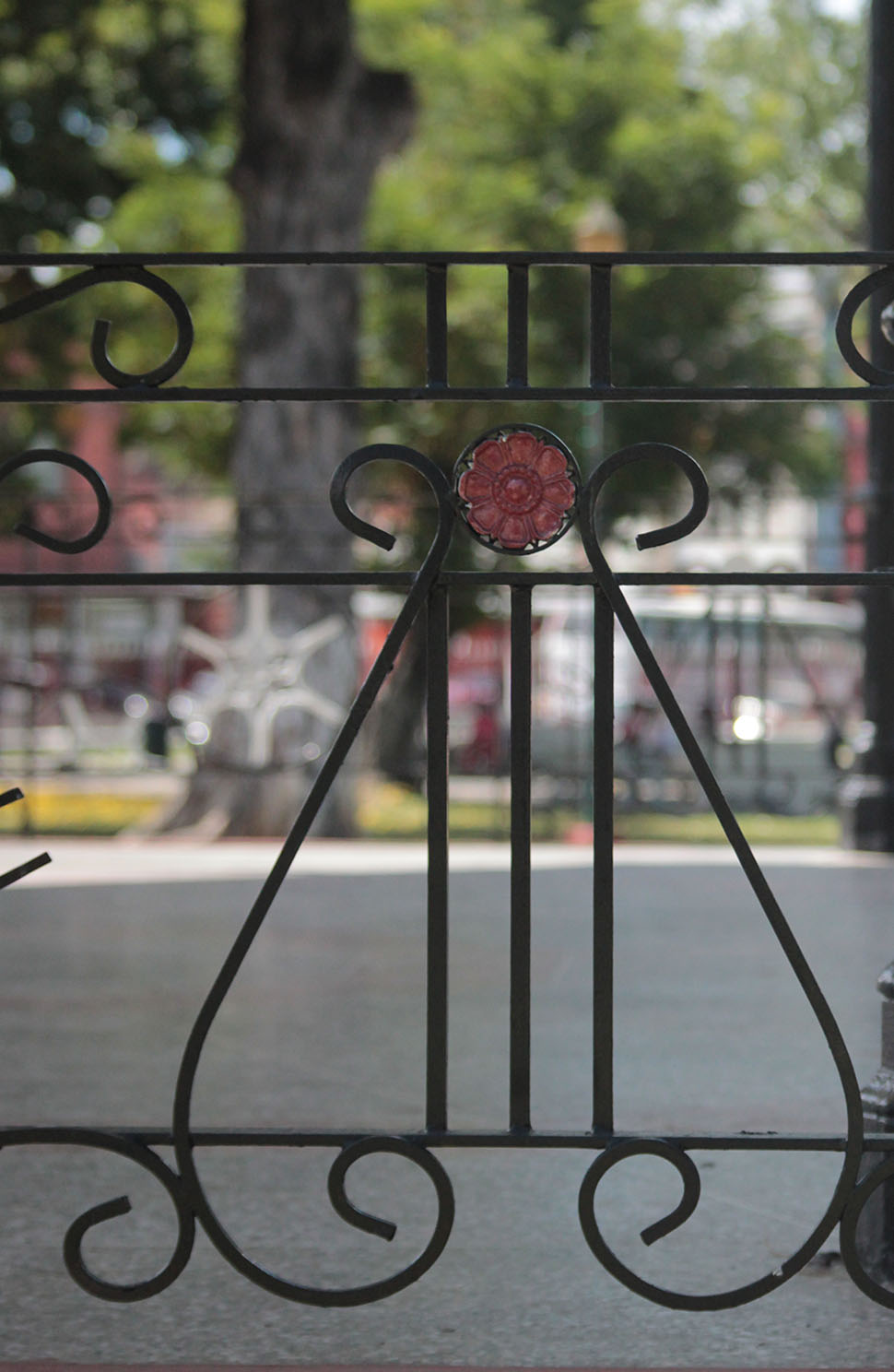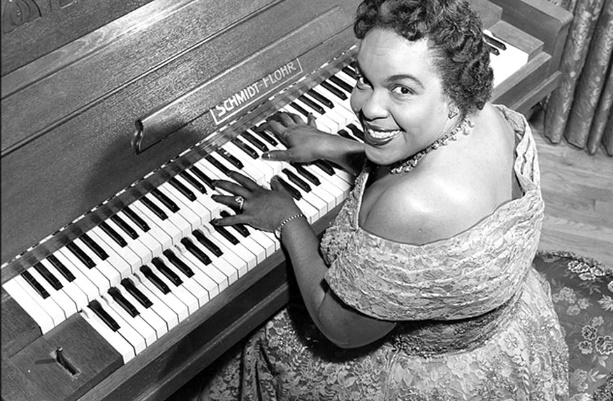Woodford Square was established in 1917 by Mayor Dr. E Prada – it was so named to honour Sir Ralph James Woodford, who had significantly contributed to the landscape of Port of Spain.
The story of what we know today to be Woodford Square goes back to 1787.
1. Woodford Square was originally part of the course of the St Ann’s River.
Until 1787, the St Ann’s River wound its way from the hills north of Port of Spain down to the Gulf of Paria and Chacon Street (directly south of the square) was part of the course. In 1787, Don José Mariá Chacón (the last Spanish Governor) had the river diverted to where it remains today, the East Dry River.
2. The area was called Place des Ames by the Indigenous Inhabitants of Conquerabia (Port of Spain).
The name “Places des Ames” or “Place of Souls” was given to the area because of a bloody battle that took place between foreign invaders and indigenous inhabitants.
3. In 1806 after an attempted uprising, three unnamed enslaved persons were hanged in Brunswick Square.
Their heads were left on display in the Square, while their bodies went to tour various estates, as an attempt to continue the reign of terror of enslavement, and discourage other enslaved persons from revolting.
Sir Ralph James Woodford (1784-1828)
Woodford was the fourth British governor of Trinidad, a Royal Navy captain and the longest serving governor in the island’s history. On his arrival, he sought to improve trade by the introduction of a round-island steamer service in 1818 – this made it easier for goods and produce to travel from remote country districts to Port of Spain. He is the governor responsible for the changed shape of the Port of Spain Waterfront. In 1823, he opened up a primary school for boys, and in 1826, he opened up a primary school for girls.
The land reclamation that he headed lead to the creation of South Quay as a first Port that trading vessels could approach. In 1817, Woodford had to leave the Government House which was then on Belmont Hill – he took this opportunity to purchase the Paradise and Hollandais Estates, using the latter to create a new Government House (now known as President’s House), the Botanical Gardens and St Ann’s, and the former for the “recreation of the townsfolk and pasturage of cattle,” well known today as the Queen’s Park Savannah.
He was anxious to befriend what remained of the Indigenous Peoples, and laid down some rules to preserve the old Spanish mission of Arima.
He was also a “dyed in the wool segregationist[1]” going so far as to demarcate certain plots in Lapeyrouse cemetery for whites. During Woodford’s tenure as Governor, Dr. Jean Baptiste Phillippe addressed a council in London, stating that life for enslaved persons, free blacks and free coloureds was a nightmare under Woodford’s rule. He is remembered to have been harsh and uncompromising with Africans, enforcing draconian slave laws, encouraging their persecution – it was his view that the enslaved persons in Trinidad had easier lives than their counterparts who lived on other Caribbean islands. In 1824, he was sent an order-in-council instructing him to take certain steps for the amelioration of the conditions in which enslaved persons lived.
4. The fountain was donated by Gregor Turnbull (a Glasgow-born merchant) in 1866.
It was originally located on Marine Square (present day Independence square) where the statue of A A Cipriani stands today. It was moved in 1896 to accommodate the tram line.
In the style of the day, the fountain shows Aphrodite, the Greek Goddess of love, sensuality and beauty holding her son Eros, the Greek God of sexual attraction. The second tier comprises of seaweeds and plants, and the third level depicts Tritons (the mermaid and merman with double tails).
Image: The Woodford Square Fountain presented to the Borough of Port of Spain by Gregor Turnbull Esquire of Glasgow AD 1866
In 1964 an unidentified assailant detached the baby Eros from the statue of Aphrodite, and tried to steal it – he was apprehended by Constable George Khanai.
5. The cast iron railings in the square were installed in 1892.
6. In 1903, Woodford Square was the site of the Water Riots
Short History Lesson – The Water Riots
A water ordinance was published on March 5th 1903 at the Red House (By the turn of the century, water usage was at a great high – there were 1380 baths in Port of Spain and the consumption was no less than 1.5 mill gallons daily) – the Executive Council meeting was adjourned to March 23rd citing, “disorderly behavior of spectators.”
When they returned on the 23rd March, the spectators were denied entry to the Council Chambers by Governor Sir Cornelius Alfred Moloney. He insisted that they needed tickets to enter the Council Chambers. Suspecting that the bill would pass, the crowd created a disturbance outside – the police intervened and tried to strong-arm the crowd into dispersing, but this only further infuriated them. During the melee, a man put a lighted match to some papers in the Registrar’s office, causing a fire to start in the Red House.
Captain Walter Darwent, the fire brigade chief claimed that rioters were waiting to stone the fire brigade, and showed reluctance in putting out the fire. Authorities of the day suggest that Captain Darwent sided with the rioters.
The crowd pelted the Red House with stones and bottles from Brunswick Square. Police read the Riot Act to the crowd, but were eventually given orders to fire on the protestors. During the chaos, it was reported that the carriage that brought the Governor’s dinner was pushed down St Vincent Street, and into the sea.
18 persons were killed, 43 persons were treated for various injuries at the Port of Spain Colonial Hospital.
“It was war between bottles and stones on one side and bullets on the other.[2]”
– Dr. Eric Williams
The commission established to determine the cause of the water riots said, “There is without doubt, a regrettable and serious division between a large influential portion of the community in Port of Span and the Executive Government regarding public affairs.”
The commission laid the blame on the Government of the colony and crown colony system, condemning the government for failing to take the public into its confidence, to explain the legislation and to show adequate respect for the views of the unofficial members nominated by the government.
“Unfortunately, the system under which legislation is undertaken in Trinidad is unfavorable to a friendly discussion by the public.”
7. In 1917 (when the name of the Square was changed from Brunswick Square to Woodford Square) Mayor E Prada built and opened the Bandstand.
Since this time, performers from all over the World have graced its stage.
[vc_row][vc_column width=”1/2″]
[/vc_column][vc_column width=”1/2″]
[/vc_column][/vc_row]
Paul Robeson came to Trinidad and performed in the Woodford Square Bandstand in 1948, and Trinidadian-Born Pianist Winnifred Atwell performed at the Woodford Square Bandstand in 1969
8. During the lead up to Independence (1956-1962), Dr. Eric Williams and the People’s National Movement used Woodford Square for their public rallies.
During this time, it was called colloquially, “The University of Woodford Square.”
There was a push in 1981 to re-name the square Dr Eric Williams Square, but nothing came of it.
9. During the 1970 Black Power Movement, the square was called the “People’s Parliament”
Persons such as Makandaal Daaga, Stokely Carmichael and George Weekes prepared and gave lectures about African Enslavement, Political History, Legal History, Political Science, Philosophy and Communism in the Square.
10. Woodford Square celebrated its 100 years on May 25th 2017
Bibliography
- Anthony, Michael, and Anthony Luengo. Historic Landmarks of Port of Spain. Oxford: Macmillan Caribbean, 2008.
- Anthony, Michael. Historical Dictionary of Trinidad and Tobago. London: Scarecrow, 1997.
- Williams, Eric. History of the People of Trinidad and Tobago,
- Express Newspaper Trinidad and Tobago. Goddess of Love to Shine Again,
- Poon Affat, Kelvin, The Book of People,
[1] Poon Affat, Kelvin. The Book of People, 2005
[2] Dr. Williams, Eric, History of the People of Trinidad


